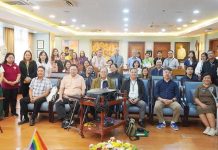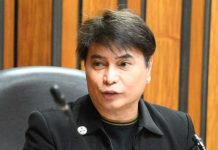
I’M BACK in the grind. I began editing manuscripts this week for the coffee table book project of Bohol I Electric Cooperative, Inc. (BOHECO I). I must say the work is a mix of exhilaration, excitement, and exhaustion rolled into one, haha! It requires commitment, dedication, thoroughness, attention to details, and discipline. Oh yes, it does! Nothing is left to chance. But like a real pro, let’s get on with it!
Interestingly, in this latest project, I once again chanced upon my ancestor, the late Atty. Getulio D. Calope, younger brother of my maternal grandma, Pateria Calope Lungay, who figured prominently in the creation of BOHECO I.
First, let me walk you down memory lane. Who is Atty. Getulio D. Calope? Manoy Tulio as he is fondly called by his nephews and nieces, and us, was the 10th child of spouses Fortunato Calope and Felipa Daray – my great grandparents – of Balilihan, Bohol.
Manoy Tulio came from a big family. They were eleven kids and interestingly with two sets of twins. He was second to the youngest. His siblings included former Balilihan presidente municipales Simplicio D. Calope for two terms (1941; 1945) – eldest; followed by Troadio and Teofilo (1st set of twins); Camilo; Gregorio and Rufo (2nd set of twins); Pedro; Pateria (my maternal grandmother); Rufa; and Antonio.
Manoy Tulio was also mayor of Balilihan from 1955 to 1959. Most interestingly, the family produced two mayors from among the siblings.
Back to BOHECO I. Under the leadership of then Bohol Governor Lino I. Chatto, the Provincial Electrification Committee Team (PECT) was formed in the late 1970. The PECT was composed of Atty. Getulio D. Calope who at the time was Provincial Assessor, representing the provincial government of Bohol as Chairperson, together with other individuals as members.
This was the early beginnings of BOHECO I. I am both honored and humbled that my ancestor – Manoy Tulio Calope – contributed to the realization of electrifying the Bohol countryside. Imagine the many years that I have served the power industry! I thought I only carved my own professional path. As it turns out, I just picked up from where my ancestor left off.
Extraordinary legacy! I’m proud of my heritage!
***
So, we have a new Chief PNP and one of his first instructions contained in a Memorandum dated May 11, 2021 is the wearing of appropriate facemask by PNP personnel. The instructions highlighted the use of the following: a) GOA, A/B/C or Athletic uniform – Use surgical mask with/or washable facemask (PNP blue); b) Pixelized FSU – Use surgical mask with/or washable facemask (camouflage or black). The washable mask of course bears the PNP logo.
The rationale was given verbally. The memorandum just followed. And since I was unable to hear the verbal rationale, I will only presume that the “need” to use washable facemask with PNP logo is for presence, appearance, and military discipline purposes short of a fashion statement!
But curiously, doesn’t the uniform establish the presence of cops already? After all, they are ubiquitous everywhere – standing out in their uniforms – no matter their desire for the opposite.
And is this move based on science? Let’s check. According to the World Health Organization (WHO), “medical masks are also recommended for the following groups because they are at a higher risk of becoming seriously ill with COVID-19 and dying: i) People aged 60 or over; ii) people of any age with underlying health conditions, including chronic respiratory disease, cardiovascular disease, cancer, obesity, immunocompromised patients, and diabetes mellitus.”
Meanwhile, “non-medical, fabric masks can be used by the general public under the age of 60 and who do not have underlying health conditions.”
There. So, science covers it as well. However, it underscores “general public under the age of 60 and who do not have underlying health conditions”. Thus, the memo should provide for exceptions.
But seriously, what’s the bottom line of this move? Less surgical mask disposal or less garbage? The PNP is a large organization, and the lesser use of surgical masks means lesser garbage. Community presence or appearance is already covered by police uniforms. Or sustainable income for neighborhood dressmakers and tailors tapped to do the production?
I can only hope that with this move, we are helping the community dressmakers and tailors increase their income given these tough times. Otherwise, I don’t see the need.
***
Writer can be reached at belindabelsales@gmail.com. Twitter @ShilohRuthie./PN





